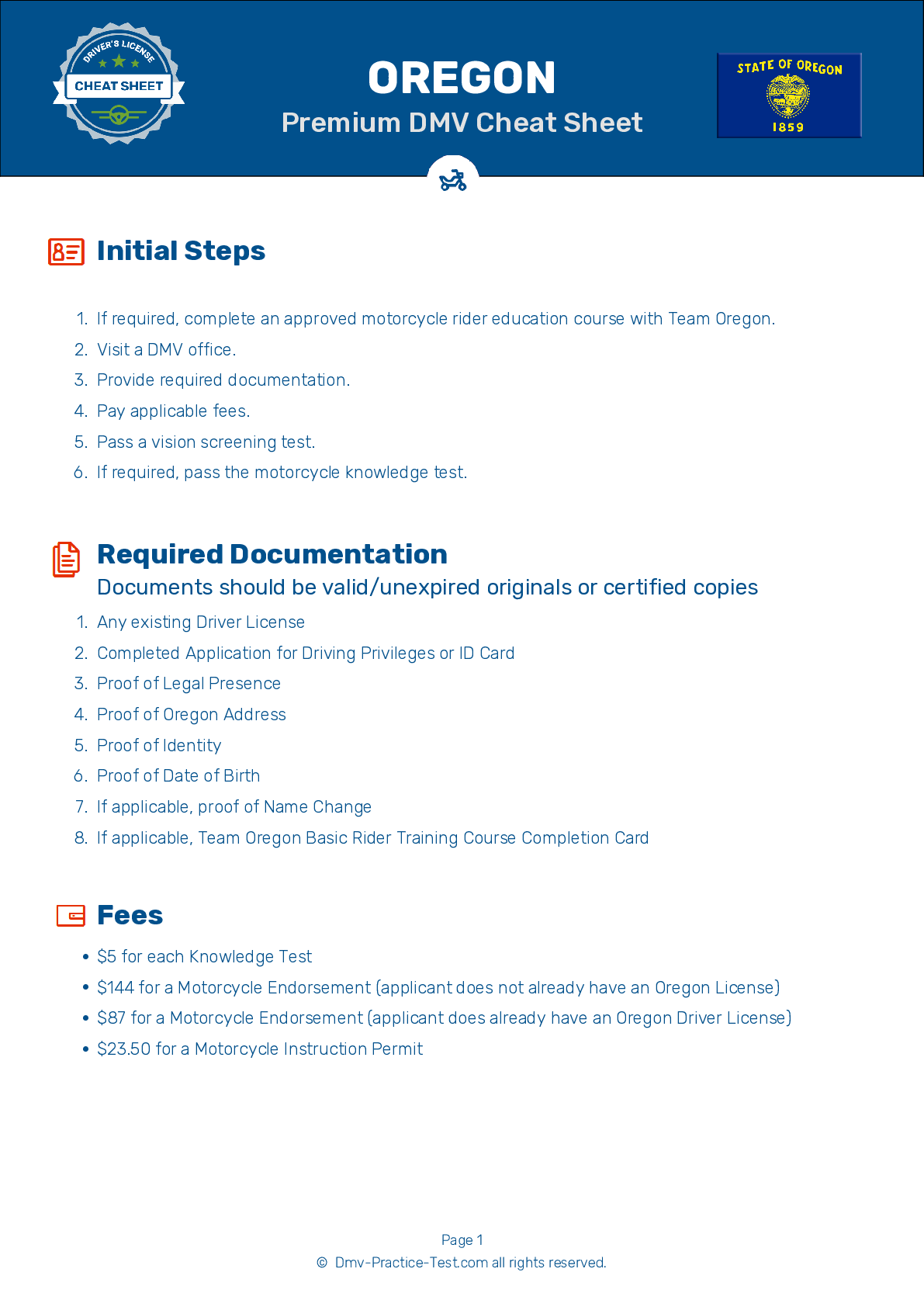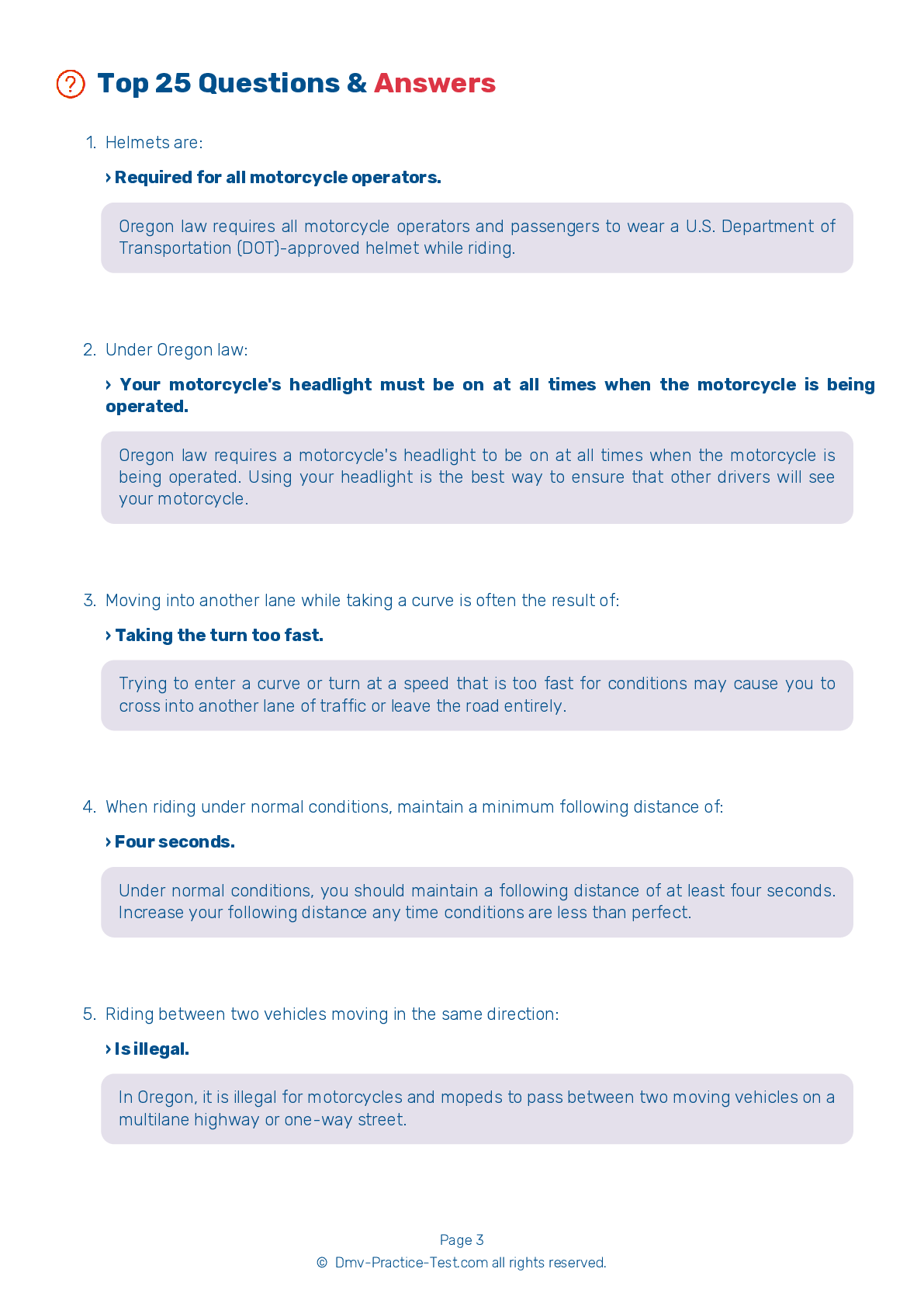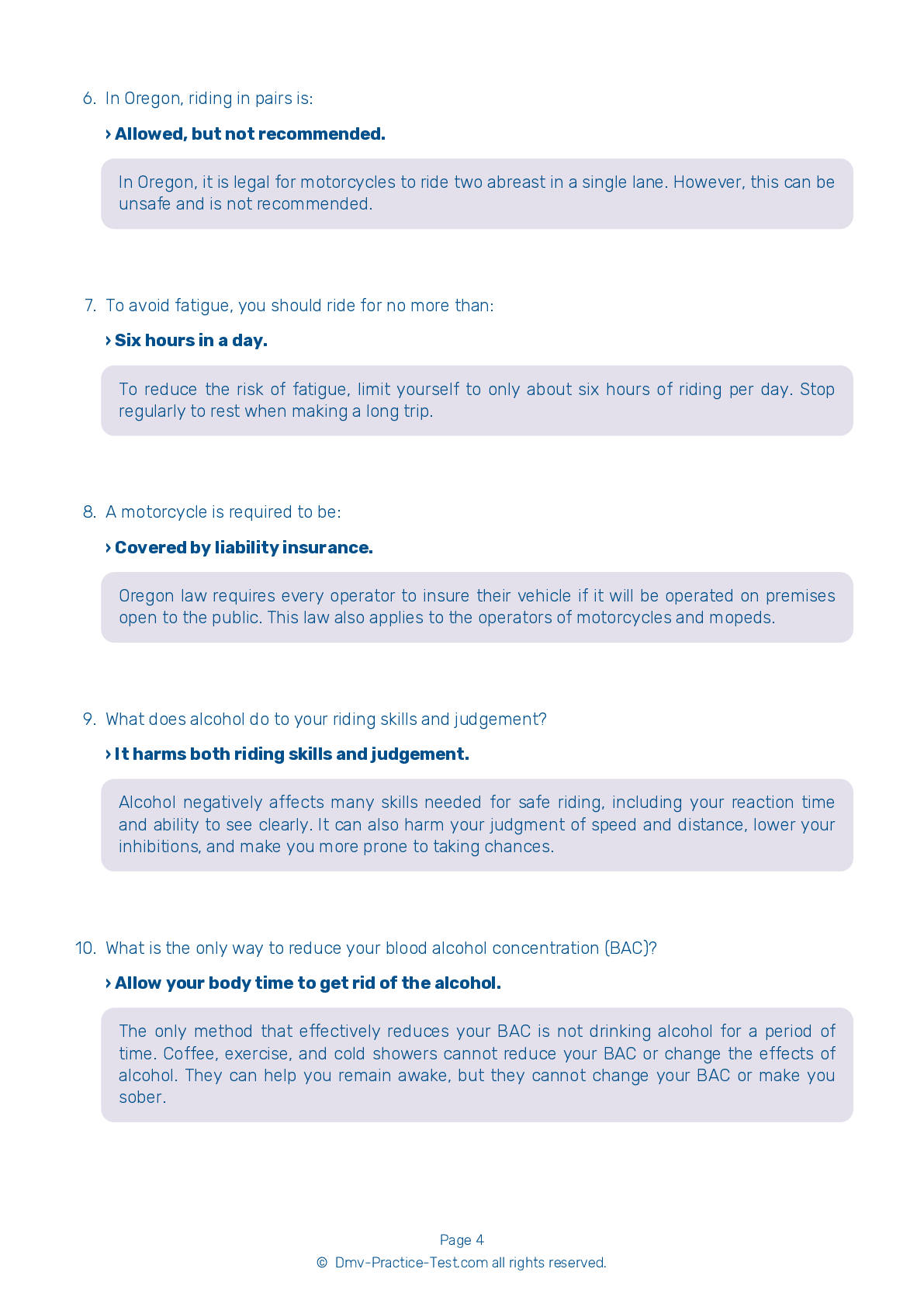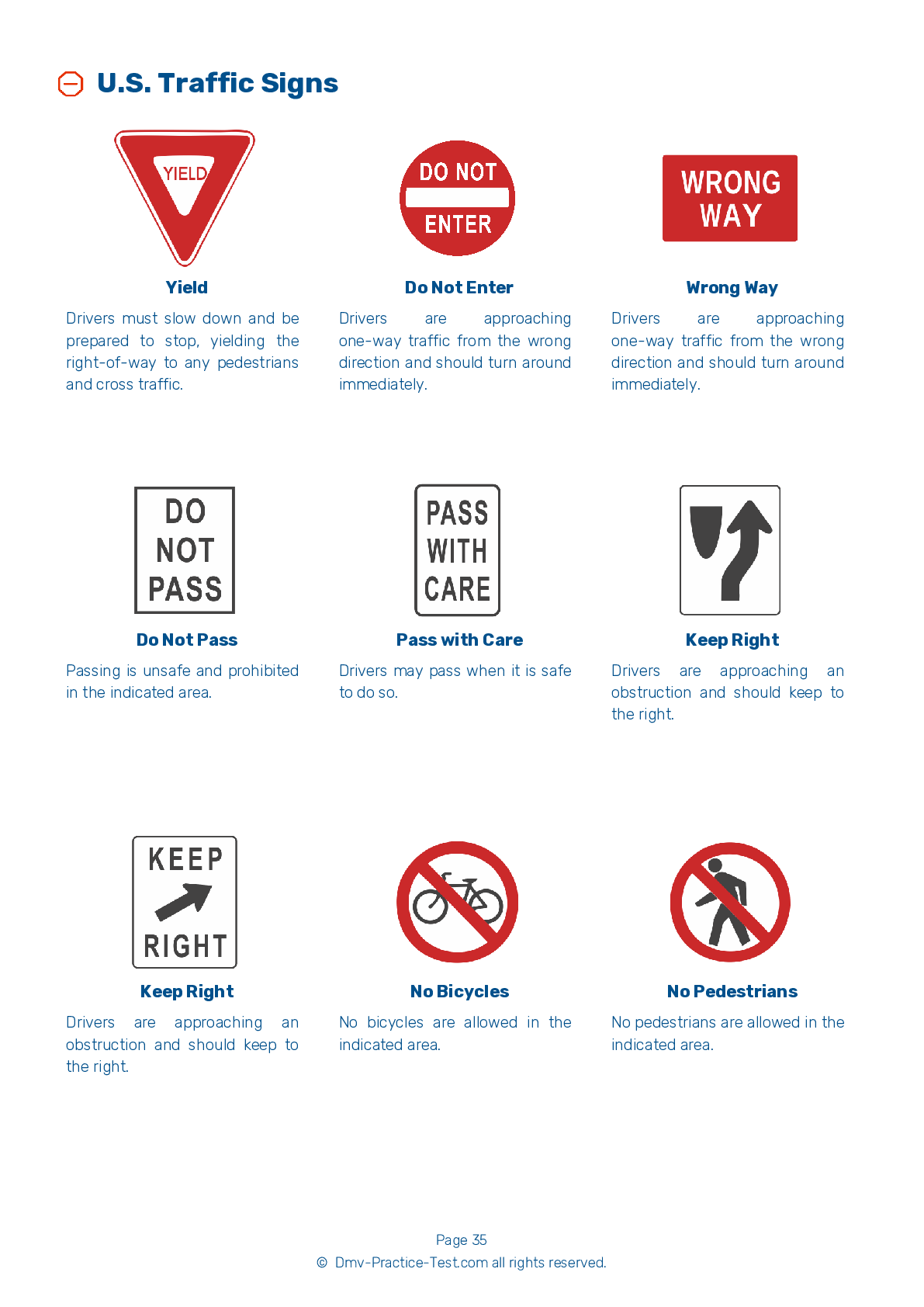Motorcycle Test | License OR 2026 | FREE Online Practice! #14 Page 3 of 4
Take this FREE motorcycle test (license in OR 2026) to check your knowledge of the road rules. To improve your results, download a motorcycle handbook online, study theory, and practice for free on our website. Still worried about how to get a motorcycle license in Oregon in 2026? Check our website for more sample tests, train as much as possible, and boost your grades!
13 . This road sign means:
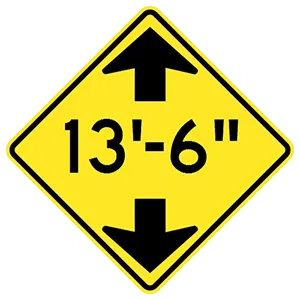
This sign warns that the overpass ahead has a low clearance. Do not proceed if your vehicle is taller than the height indicated (in this case, 13 feet, 6 inches).
14 . When riding a motorcycle:
For your protection when riding, you should wear boots or shoes that are high and sturdy enough to cover and support your ankles. Heels should be short so that they do not catch on rough surfaces.
15 . It is difficult for other motorists to see motorcycles at night. To make up for that, a motorcycle rider should:
Strategies for safely riding at night include reducing your speed, increasing your following distance, using the lights of the car ahead to help see farther down the road, using your high beam headlight (unless following or meeting another vehicle), and being flexible about your lane position.
16 . When riding at night, a motorcyclist should:
Riding at night can be dangerous because a rider’s ability to see and be seen by fellow motor vehicle operators is limited. It is recommended that riders adjust their riding behavior to compensate for this limited visibility by reducing their speed, maximizing their headlight usage, and increasing their following distance.
17 . A motorcycle is required to be:
Oregon law requires every operator to insure their vehicle if it will be operated on premises open to the public. This law also applies to the operators of motorcycles and mopeds.
18 . If your motorcycle begins to wobble, you should:
Trying to accelerate out of a wobble is dangerous and will only make your motorcycle more unstable. Instead, grip the handlebars firmly (without trying to fight the wobble), gradually close the throttle to slow down, and move your weight as far forward and downward as possible. Pull off the road as soon as you can.
See the exact questions that will be on the 2026 Oregon DMV exam.
99.2% of people who use the cheat sheet pass the FIRST TIME
Jeneen was tired of paying $5/gallon. She got herself a scooter that required the motorcycle license. She studyed the motorcycle test cheat sheet and passed her test the next day!
Christopher tells us how he knew nothing prior to obtaining the motorcycle study guide, and he only got one question wrong because he clicked on the wrong answer by mistake.
